Great Shanghai (대상해)
4.2Km 2020-02-07
135, Sejong-daero, Jung-gu, Seoul
+82-2-2171-7869
Great Shanghai is a Chinese restaurant serving deliciously genuine Sichuan and Beijing-style cuisine, located within the Koreana Hotel. Their specialty is shark's fin, directly imported from Sanji, and prepared by the head chef who has over 30 years of experience. Aside from shark's fin, the healthy buldojang, mapadubu and ddanddanmyeon are also top menus. Great Shanghai is decorated with high-quality interior design, and features rooms of various sizes for groups and business dinners.
Sigoljeonjip (시골전집)
4.2Km 2021-03-19
123, Jong-ro, Jongno-gu, Seoul
+82-2-742-8525
This Korean cuisine is located near Jongno 3(sam)ga Station, Seoul. The representative menu is seafood and green onion pancake. Enjoy delicious food at affordable prices.
Gwanghwamun Seokgalbi (광화문석갈비)
4.2Km 2021-05-25
136, Sejong-daero, Jung-gu, Seoul
+82-2-318-6288
It is a restaurant frequently used as a place for group dinners by office workers. This restaurant's signature menu is grilled ribs on a hot plate. This Korean dishes restaurant is located in Jung-gu, Seoul.
Well-being Sujebi (웰빙수제비)
4.2Km 2021-03-26
123, Jong-ro, Jongno-gu, Seoul
+82-2-747-2436
A hidden restaurant frequented by workers in Jongno. The best menu at this restaurant is hand-pulled dough in perilla seed soup. This Korean dishes restaurant is located in Jongno-gu, Seoul.
Laderach SFC (레더라 SFC)
4.2Km 2021-03-29
136, Sejong-daero, Jung-gu, Seoul
+82-2-3789-3245
It is a Swiss chocolate shop. The best menu at this restaurant is chocolate drink. This cafe is located in Jung-gu, Seoul.
Koreana Hotel (코리아나 호텔)
4.2Km 2021-06-21
135, Sejong-daero, Jung-gu, Seoul
+82-2-2171-7000
Koreana Hotel has been one of the top notch traveler's picks for more than 30 years, having the business motto 'comfort for our customers.'
The hotel is located at the Gwanghwamun fourway intersection, at the heart of Seoul, and provides 345 guest rooms. Amongst its dining facilities, the hotel boasts a Korean restaurant, Chinese restaurant, Japanese restaurant, and a Western restaurant, as well as a bar, coffee shops, and bakery. Eight banquet halls and a sauna are also available.
The hotel has operated as the main press center restaurant for the 1988 Seoul Olympics, and subsequently operated as the Olympic Village Restaurant for the Special Olympics. As a result of their successful operations, the hotel received lavish praise from the organizers, as well as from the players and staff for the high quality food and spectacular service.
Imperial Palace Hotel (임페리얼 팰리스 호텔)
4.2Km 2021-04-02
640, Eonju-ro, Gangnam-gu, Seoul
+82-2-3440-8000
Imperial Palace Hotel first opened on September 18, 1989, starting as a deluxe hotel and becoming a superior deluxe hotel after 10 years in June 1999. The hotel has remained the pride of the Korean hotel industry thanks to its effective management and improving domestic capital. In 2005, it carried out a large-scale remodeling project to enlarge its size to resemble luxurious European hotels, including a large-sized lobby, convention center that can accommodate over 1,000 visitors, classical wedding hall, and 405 guestrooms. The hotel is part of a chain, along with Imperial Palace Boutique Hotel in Itaewon and Imperial Palace Hotel – Fukuoka in Japan.
Fleuve Han (한강)
4.2Km 2021-01-28
257, Gangbyeonbuk-ro, Seongdong-gu, Seoul
+82-2-120
Le fleuve Hangang s’écoule à travers la ville de Séoul et les provinces du Gyeonggi-do, du Chungcheongbuk-do et du Gangwon-do. Depuis 5 000 ans, il charrie les joies, les peines et la vie entière du peuple coréen. Les berges du fleuve sont l’un des parcs préférés des Séouliens.
Le fleuve Namhangang, qui est l’embranchement principal du fleuve Hangang, prend sa source à Geomyongso, Changchuk-dong, Taebaek-si dans le Gangwon-do. Il s’écoule vers le nord sous le nom de Golchicheon, dans le village voisin de Hajang-myeon à Samcheok-si. Il passe par le barrage de Gwangdong et rejoint la rivière Imgyaecheon qui prend sa source dans la montagne Seokbyeongsan (1 010 m d’altitude). A Yeoyang-ri, Buk-myeon, Jeongseon-gun il rejoint la rivière Songcheon qui prend sa source dans le mont Hwangbyeongsan (1 407 m) et devient le fleuve Joyanggang, qui s’écoule vers l’Ouest. Lorsqu’il se dirige vers le sud, il rejoint la rivière Odaecheon et prend le nom de Donggang. A Yeongwoleup, le fleuve Donggang rejoint les rivières Pyeongchanggang et Jucheongang pour devenir le fleuve Seogang. Ensuite, il rejoint la rivière Dalcheon à Chungju, les rivières Seomgang et Cheongmicheon à Wonju-si dans le Gangwon-do et à Yeoju-gun dans le Gyeonggi-do, et les rivières Yanghwacheon, Bukhacheon et Heukcheon. Finalement, il rejoint le fleuve Bukhangang à Yangsu-ri.
Pavillon de Bosingak (보신각)
4.2Km 2020-11-03
54, Jong-ro, Jongno-gu, Seoul-si
+82-2-2133-2641
Second trésor national de Séoul, situé à Jongno, le pavillon de Bosingak était utilisé durant la dynastie Joseon pour annoncer l’heure. Il y avait quatre portes à Séoul qui permettaient aux gens d'entrer et de sortir. A 4 h du matin, la cloche sonnait 33 coups et les portes s’ouvraient. A 19h, la cloche sonnait 28 coups et les portes se fermaient. La cloche servait aussi de sirène.
La cloche se situait dans le temps Wongaksa en 1468 avant d'être déplacée en 1618 dans sa position actuelle. Dans un but de conservation, la cloche originelle se trouve désormais au musée national de Corée. La cloche de substitution dans le pavillon a été réalisée en 1985.
Lors du réveillon de la Nouvelle Année, la cloche sonne 33 coups alors que des milliers de gens affluent dans la rue Jongno pour assister à cet évènement.
Les touristes peuvent également assister à une reconstitution de la cérémonie de la cloche (sauf les lundis) à partir de 11h20.
Cérémonie au Beffroi Bosingak (보신각타종행사)
4.2Km 2020-09-10
54, Jong-ro, Jongno-gu, Seoul
Bureau de gestion du Beffroi Bosingak : +82-2-2133-2641
La mairie de Séoul a organisé cette cérémonie qui fait sonner la cloche du Beffroi Bosingak depuis le 21 novembre 2006 pour les citoyens de Séoul et les touristes étrangers. Il a lieu tous les jours à midi, hormis lundi.
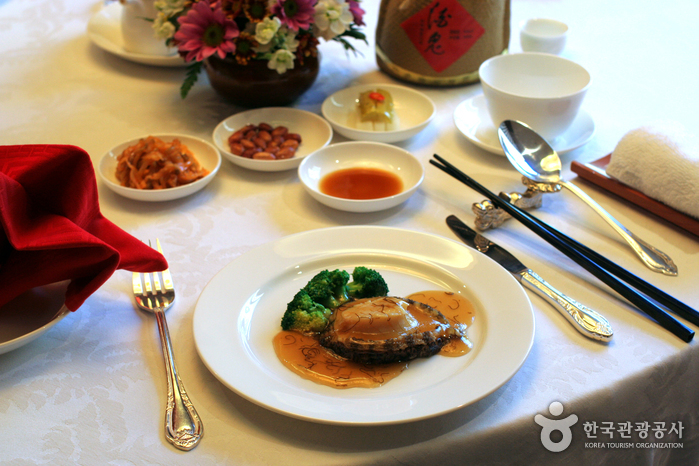
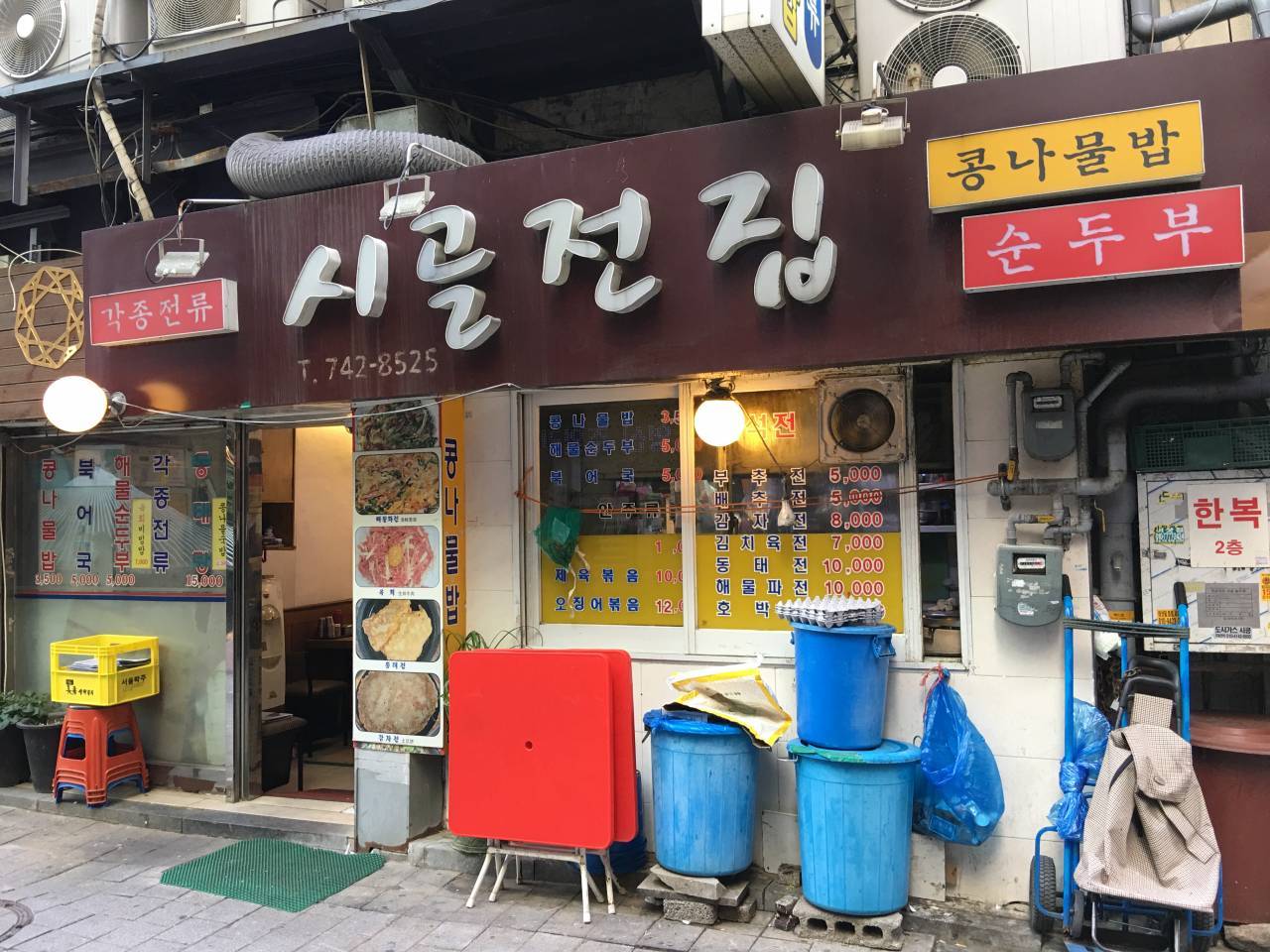
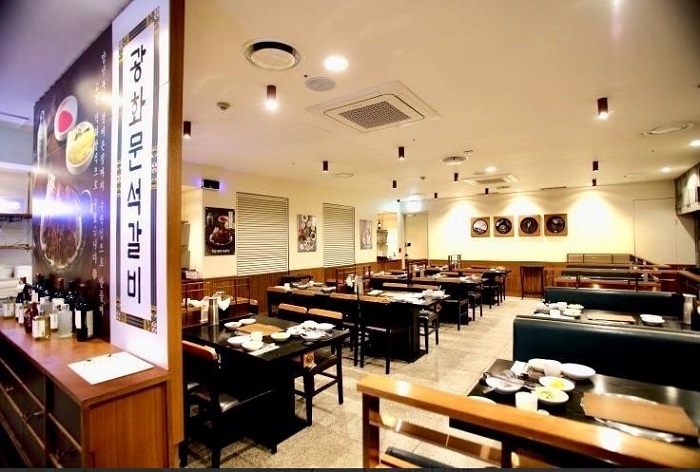
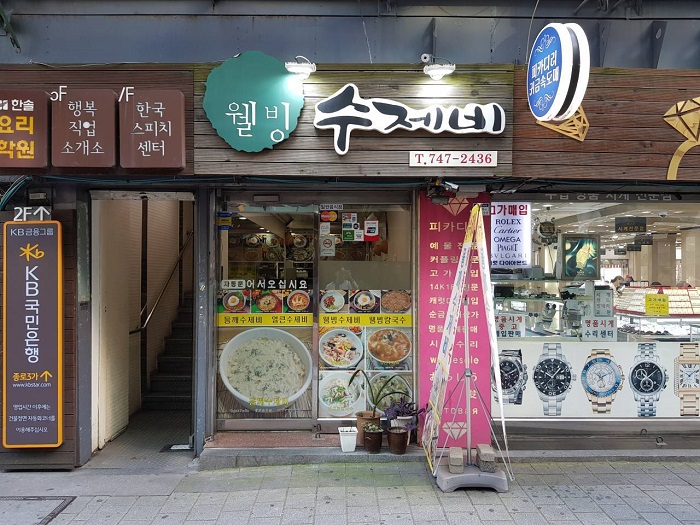
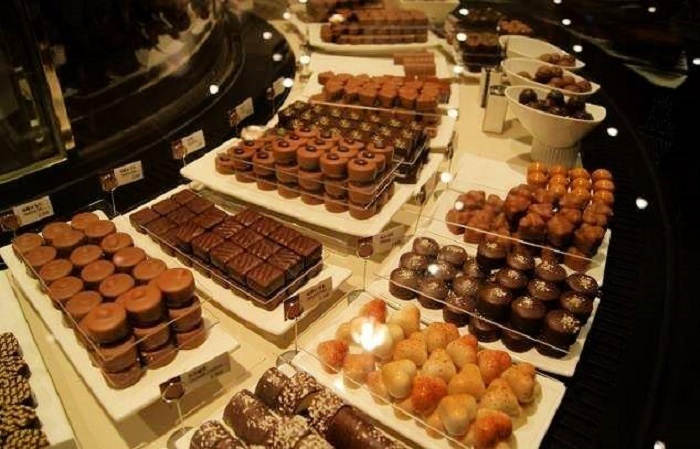
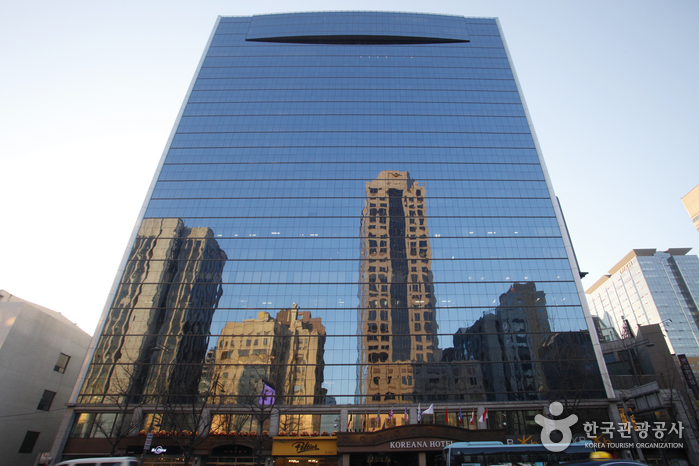
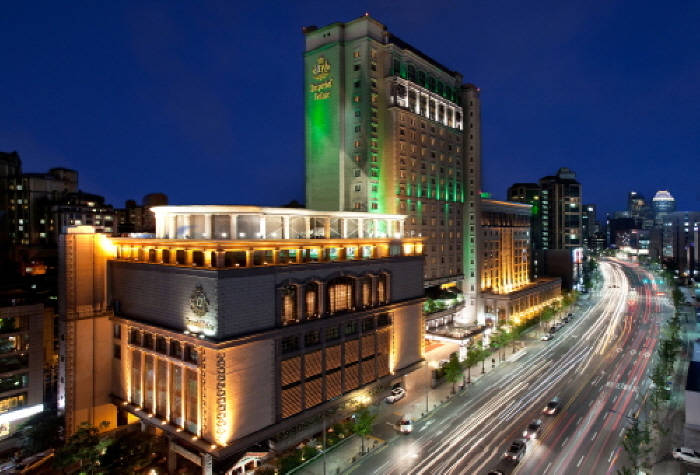
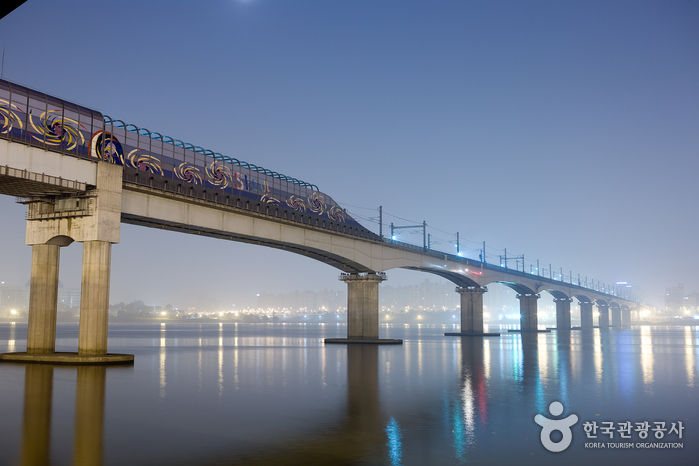
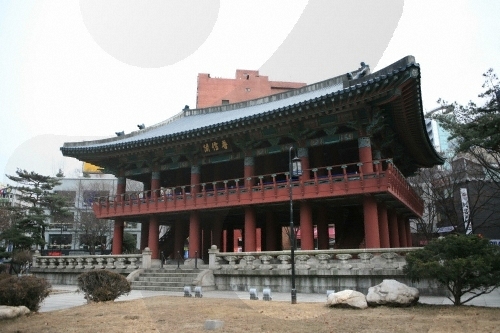
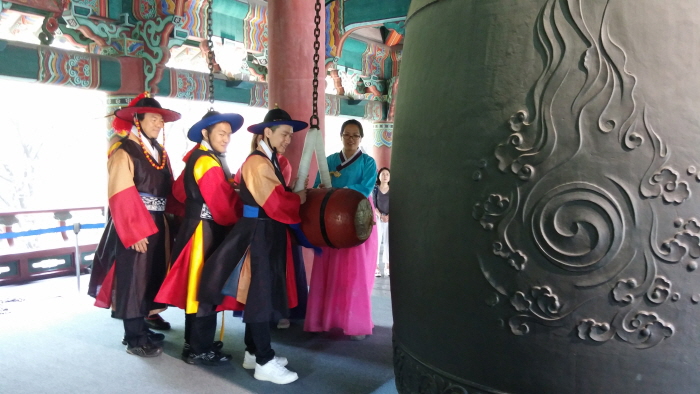
 Français
Français
 한국어
한국어 English
English 日本語
日本語 中文(简体)
中文(简体) Deutsch
Deutsch Español
Español Русский
Русский